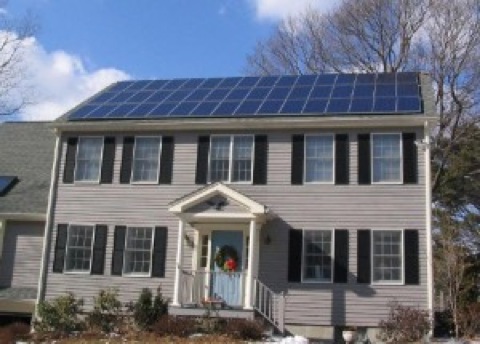Key words :
future energies,
photovoltaic
,renewable energy
,renewable electricity
,solar panels
,sunrun
SunRun: A new deal for solar
18 Sep, 2009 05:50 pm
Until recently, you had to be deep green?and have deep pockets?to put solar photovoltaic panels on the roof of your home. The costs were high?$20,000 to $50,000 or more. The technology was baffling. The return on that big upfront investment was uncertain. A California company called SunRun is changing that. A well-funded renewable energy startup ? yes, even in these tough times, this small company has raised capital ? SunRun offers homeowners a simpler, cheaper and less risky way to go solar.
 |
| Gray Watson, Creative Commons |
Now, homeowners in a handful of states – California, Arizona and Massachusetts – can do the same. SunRun plans to expand to other states, and it’s got a competitor, Solar City, that offers similar deals in California, Arizona and Oregon. If these startups succeed, you can bet that other companies will rush to sign up customers in states with the right combination of a favorable regulatory environment and high electricity rates that make it easier for solar to compete.
That’s because, as Ed Fenster, the CEO of SunRun, sees it, you can’t build a big, scalable solar business just around the idea of going green.
“If you really want to deploy renewable energy at scale, you have to save people some money,” Fenster says.
“That it’s green is the icing on the cake, not the cake itself.”
-Ed and I had lunch recently in Washington (no one ordered cake) to talk about SunRun, and afterwards I talked by phone with Lynn Jurich, the company’s president. (You can listen to a podcast of our conversation at The Energy Collective website.) Ed and Lynn met a few years ago when they were both MBA students at Stanford, but they have prior business experience, he at the Blackstone Group and Asurion Corp. (they sell extended warranties), she at Summit Capital, a venture capital and private equity firm.
SunRun is still small—fewer than 10,000 customers and only 23 employees—but the company got my attention because its business model makes sense and it has raised some serious money from respected investors. Foundation Capital invested about $8 million in 2008, and this summer (when not many startups were raising money) SunRun closed a Series B round of funding for $18 million led by Accel Partners and joined by Foundation. In November 2008, U.S. Bancorp committed $105 million in project finance to cover the costs of buying and installing solar panels.
The challenge for SunRun is to take the incredibly complicated business of solar and make it really simple to the consumer. The complexity arises from constantly-changing PV technology, state-by-state regulatory regimes that treat solar differently and the vagaries of federal energy and tax policy that are essential to the business model. “There’s an expression we use—under each molehill, a mountain,” Fenster says.
The company’s website—its most important marketing channel—tries to make it easy for customers to order. They can choose how much to pay upfront, estimate their savings and get the answers to such FAQs as “What happens in rain and fog?” (you’ll still get power from UV rays) and “Can I sell extra energy to my utility company?” (Yes and no, depends on where you live). There are lots of questions about taxes and regulations, an indication of how dependent the company and the solar market are on government subsidies.
On the brighter side, SunRun is looking at a very big market. The company estimates that in the three states where it operates, it can sell power at a price per kilowatt hour that is lower than the competing utility to homeowners who pay about $8 billion in electricity bills a year. Solar PV is most competitive in places where rates are high, where roofs are flat, where homes are larger, where the sun shines more and, of course, where customers place some value on their desire to be environmentally responsible.
About 20,000 to 25,000 people installed solar on their homes last year, Fenster told me—a fraction of those for whom it makes economic sense. “People really don’t want to own their own solar systems,” he says.
The encouraging news is that now, they don’t have to.
Originally published on Marc Gunther.com
Marc Gunther is a veteran journalist, speaker, writer and consultant whose focus is business and sustainability. He is a contributing editor at FORTUNE magazine, a senior writer at Greenbiz.com, a lead blogger at The Energy Collective and a contributor to HOW online.
Key words :
future energies,
photovoltaic
,renewable energy
,renewable electricity
,solar panels
,sunrun
-
12/12/12
“Peak Oil” is Nonsense… Because There’s Enough Gas to Last 250 Years.
-
05/09/12
Threat of Population Surge to "10 Billion" Espoused in London Theatre.
-
05/09/12
Current Commentary: Energy from Nuclear Fusion – Realities, Prospects and Fantasies?
-
04/05/12
The Oil Industry's Deceitful Promise of American Energy Independence
-
14/02/12
Shaky Foundations for Offshore Wind Farms







I guess this means we can't expect an MBA to personally deliver the customer any dividends on a singing pony...